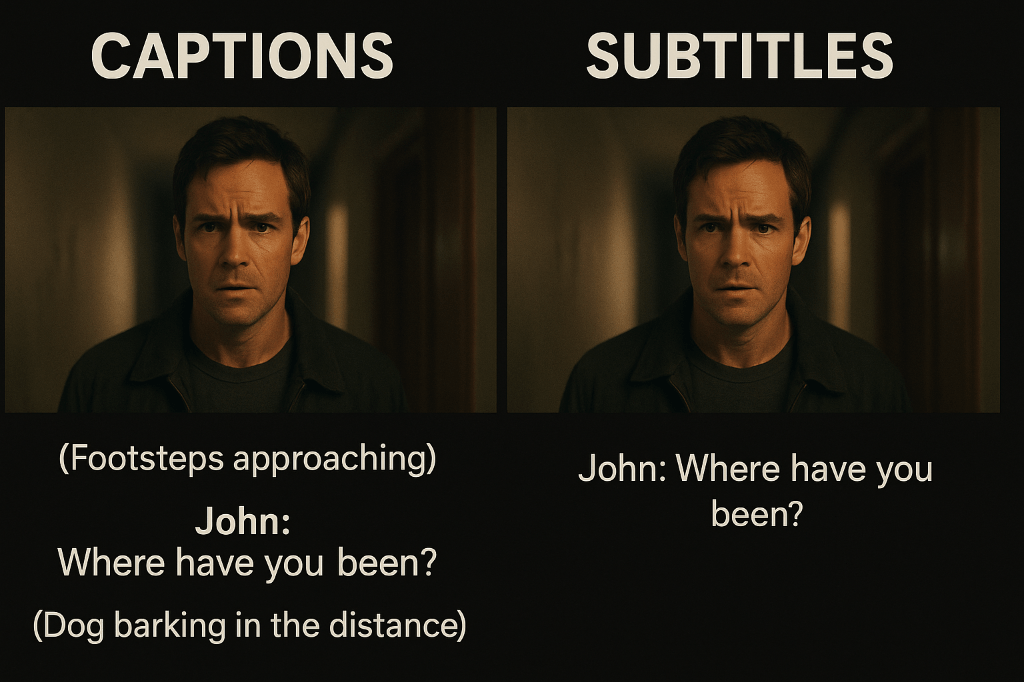In today’s diverse and digital world, making content accessible to everyone is more important than ever. Whether you're streaming your favorite TV series, watching a YouTube tutorial, or viewing a live church service, you might come across captions and subtitles. While these terms are often used interchangeably, they serve different purposes and are designed for distinct audiences. Let’s explore the differences between captions and subtitles and why both are crucial for inclusive communication.
What are Captions?
Captions are text versions of the spoken part of a television, movie, or computer presentation. They provide a critical service for viewers who are deaf or hard of hearing, ensuring they can fully engage with the content.
Key Features of Captions:
Inclusion of Non-Speech Elements: Captions do more than transcribe dialogue. They include descriptions of background sounds, sound effects, and other audio cues (e.g., [door creaks], [phone rings]). This additional information helps viewers understand the context and emotions conveyed through sounds.
Speaker Identification: Captions often identify who is speaking, which is particularly useful in scenes with multiple speakers or off-screen dialogue.
Closed vs. Open Captions: Closed captions can be turned on or off by the viewer, offering flexibility. Open captions, on the other hand, are embedded in the video and cannot be turned off.
What are Subtitles?
Subtitles, on the other hand, are primarily intended for viewers who do not understand the language spoken in the video. They provide a translation of the dialogue into another language or a transcription in the same language.
Key Features of Subtitles:
Focus on Dialogue: Subtitles typically include only the spoken dialogue and sometimes important on-screen text (e.g., signs, letters) but do not provide additional audio cues or sound effects.
Multiple Languages: Subtitles are often available in multiple languages, making content accessible to a global audience.
Types of Subtitles: There are standard subtitles, which focus on translating dialogue, and Subtitles for the Deaf and Hard of Hearing (SDH), which include some additional information similar to captions but are also available in multiple languages.
Why Both Matter
Both captions and subtitles play crucial roles in making media accessible and inclusive.
For the Deaf and Hard of Hearing: Captions ensure that viewers who cannot hear the audio still receive all the information conveyed through sound. This includes understanding the emotions and actions that sound effects convey, which are vital for following the storyline.
For Non-Native Speakers: Subtitles break down language barriers, allowing viewers to enjoy content in a language they understand. This is especially important in our globalized world where media is shared across different cultures and languages.
Enhanced Learning: For those learning a new language, subtitles can be a valuable tool. Watching content with subtitles in the target language can improve comprehension and vocabulary.
Conclusion
In summary, while captions and subtitles both aim to make video content more accessible, they cater to different needs. Captions provide a complete textual representation of all audio elements in a video, crucial for those who are deaf or hard of hearing. Subtitles translate or transcribe spoken dialogue, making content accessible to non-native speakers and aiding language learners.
Understanding the difference between these two can help content creators choose the right tool to make their media inclusive for all audiences. Whether it's a church service, a corporate training video, or entertainment, ensuring everyone can access and enjoy the content is a step towards a more inclusive world.
At InterScribe, we recognize the importance of accessibility in communication. Our services are designed to break down language barriers and provide comprehensive solutions for live interpretation and captioning. Let's work together to ensure every voice is heard and understood.
